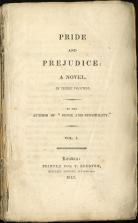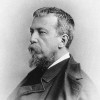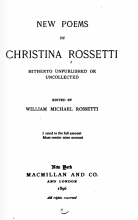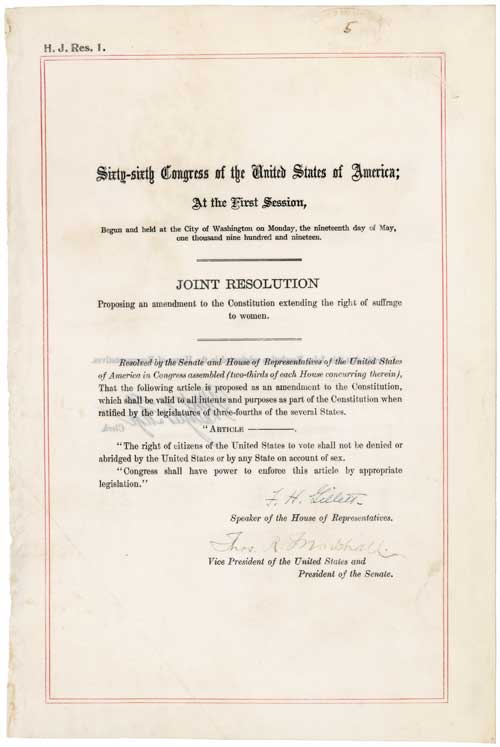Literature of Temptation Over Time
Created by Catherine Golden on Thu, 06/16/2022 - 17:43
Part of Group:

 Temptation takes us to texts across centuries and continents. In this course we will move among literary periods and across oceans as we examine this theme that dates to Genesis in the Bible. We will build a timeline as we go and add maps and images and related historical context to tease out the richness of this theme in literary studies.
Temptation takes us to texts across centuries and continents. In this course we will move among literary periods and across oceans as we examine this theme that dates to Genesis in the Bible. We will build a timeline as we go and add maps and images and related historical context to tease out the richness of this theme in literary studies.
Timeline
Chronological table
| Date | Event | Created by | Associated Places | |
|---|---|---|---|---|
| circa. 1400 |
Goblins on the Story StageWhile there is no certain consensus for when and where goblins emerged as figures in folklore, most ascribe their conception to some point within Europe's middle ages. Variations of goblins come from as widespread as Zimbabwe and France, though they are believed to be primarily of Germanic and British origin. They have captured imaginations for centuries because their characters are endlessly capacious. Goblins can range from mischievous to malignant, charismatic to foul. Usually associated with the natural world and dark, earthy places, goblins find their niche in many a story. They share traits with other fay creatures from myth such as kobolds, red caps, gnomes, etc, and populate stories alongside these mystical figures. Goblins themselves are remarkable versatile and have emerged in ancient folklore and oral traditions, literature as varied as Goblin Market and Lord of the Rings, and contemporary video/board games such as D&D and World of Warcraft. Critics suggest goblins are the embodiment of many antisemitic tropes from their association with stinginess/monetary dishonesty and their frequent portrayal with large, hooked noses. Many have found issues with JK Rowling's goblin bankers in the Harry Potter series because of this problematic portrayal. By Sasha Green '26 |
Catherine Golden | ||
| 1564 |
Birth of Christopher (Kit) Marlowe (1564-93)
This portrait of an anonymous artist is believed to be of Christopher Marlowe (1564-93). It was painted in 1585. Christopher Marlowe was a leading Elizabethan playwright and poet . The most important dramatist before William Shakespeare, Marlowe earned a reputation for the establishment of dramatic blank verse. His playwriting career lasted just over six years, but he achieved greatness and is best known today for Dr. Faustus, published posthumously in 1604 and 1616. His career was cut short. Marlowe died young and under mysterious circumstances. Was his death in a brawl over a lodging house bill linked to his alleged involvement as a spy in Queen Elizabeth I's secret service? |
Catherine Golden | ||
| 26 Apr 1564 to 23 Apr 1616 |
Marlowe's Contemporary, William ShakespeareShakespeare (1564-1616), a respected Elizabethan playwright and poet, was a contemporary of Christopher Marlowe. Scholars believe Marlowe and Shakespeare likely knew each other because the worked in same field and their plays were produced around the same time. Was Marlowe a spy and assinated at the request of the Crown? Some scholars believe that Marlowe's death was faked and that he went into hiding and, under the patronage of Thomas Walsingham. wrote plays attributed to Shakespeare. This wild theory is called the Marlovian Consipiracy.
|
Catherine Golden | ||
| circa. 1611 |
Genesis
Genesis in the Bible, recorded in the King James version of the Bible published in 1611, includes the creation of humankind and the temptation of Adam and Eve. The Garden of Eden is described in the Bible as being the place where the first man, Adam, and his wife, Eve, lived after they were created by G-d. This garden forms part of the creation myth and helps to explain the notion of original sin and mankind's wrongdoings. Eden's location is still under speculation among—is it near the Tigris and Euphrates (northern Mesopotamia), in Iraq (Mesopotamia), Africa, the Persian Gulf, or metaphorical? |
Catherine Golden | ||
| 1616 |
Publication of Dr. Faustus
The Tragical History of Doctor Faustus by Christopher (Kit) Marlowe is based on the Faust story in which a man sells his soul to the devil for unlimited power and knowledge. Doctor Faustus was first published in 1604, eleven years after Marlowe's death and at least twelve years after the first performance of the play. Better known is the 1616 version, which may be an adaptation of the play by other playwrights. If we set this play in a literary history context, Marlowe’s Faust is caught between the Church-dominated consciousness of the Middle Ages (6th to 15th centuries) and the humanism characteristic of the Renaissance (literature primarily written between 1500-1660). Equally, Faust has qualities that harken back to the earlier epic tradition: he will undertake a journey, as is so with the heroes of traditional epics. |
Catherine Golden | ||
| 28 Nov 1757 to 12 Aug 1827 |
William Blake (1757-1827)
National Portrait Gallery, Thomas Phillips, 1807 portrait of Blake William Blake (1757-1827) speaks to the Romantic Age. Largely self-educated, he iscelebrated today as a poet and printmaker as well as a visionary. If his contemporaries largely neglected him, today he is celebrated for his imagination and creativity. He |
Catherine Golden | ||
| circa. 1760 to circa. 1840 |
Industrial Revolution
George Cruikshank, "London Going Out of Town, or, The March of Bricks & Mortar," 1829. As England moved from an agrarian society to an urban one, people began to lament the loss of nature. Leading caricaturist George Cruikshank animates the building blocks of industry--shovels and bricks move into and erode the countryside while personified haystacks look on in horror. Not surprising, the Industrial Revolution had a major impact on Romantic poetry by authors including William Blake and William Wordsworth. Nostalgia for the pastoral also resonates in literature of the long nineteenth century by authors including Charles Dickens and Elizabeth Gaskell. |
Catherine Golden | ||
| 16 Dec 1775 to 18 Jul 1817 |
Birth of Jane Austen
Above is the parsonage in Steventon, Jane Austen's childhood home. She was born there on December 16, 1775 on a crisp winter day. |
Catherine Golden | ||
| circa. 1779 to circa. 1779 |
William Blake Completes Apprenticeship and Starts Independent CareerIn 1779 William Blake completed his apprenticeship and started an independent career as an engraver. In addition to working on his own artwork, he did comission work for other artists, much of it engraving. The conventional method of engraving at this time was copperplate engraving, a very long and tedious process that came about in the 15th century. It required many slow and careful hours of work because any mistakes would be impossible to correct without restarting the piece. Copperplate engraving uses an intaglio printing technique. Lines are carved into the plate and ink is placed into the grooves and then wiped away from the rest of the piece. The plate is then pressed into a humid sheet of paper using a printing press. Copperplate engraving was said to produce more exquisite images than woodcuts, though many famous engravers -- Blake included -- were masters of both techniques. For many of his most famous works, however, Blake used a method of printing that he invented called "illuminated printing," though it is known today as relief etching. This method involved painting the design on the copper plate backwards using an ink that was resistant to nitric acid. When the plate was put in the acid, it would etch away all of the unprotected metal and leave the design raised so that it could be easily printed. |
Sophia Delchery | ||
| circa. 1800 |
Regency England--the Age of Austen
In Jane Austen's day, one could travel only six to eight miles per hour depending on the quality of the roads. Distances of 60 miles, an hour's trip by car today, took seven to ten hours, sometimes requiring an overnight stay to rest the horses. Compared to our global world today, life in Regency England was smaller and more insular. |
Catherine Golden | ||
| 1813 to 1813 |
"Pride and Prejudice" is published!Although Jane Austen began working on this novel under a different title of "First Impressions," she published it in 1813 to great acclaim. However, she did not reveal her name and published it under "A Lady." |
Catherine Golden | ||
| 18 Jul 1817 |
Death of Jane Austen in Winchester
8 College Street, Winchester, The Victorian Web, photo by Jacqueline Bannerjee. Jane Austen grew ill in 2017, and she and her sister Cassandra went to stay in Winchester in this house on 8 College Street. Jane could be attended by a physician named Mr. Lyford of the County Hospital, Winchester, who had treated her previously. She died there on July 18, 1817 and was buried in nearby Winchester Cathedral. The home has a plaque that reads, "In this house Jane Austen lived her last days and died 18th July 2017." |
Catherine Golden | ||
| 5 Dec 1830 |
Birth of Christina Georgina RossettiChristina Rossetti was born on 5 December 1830 at 38 Charlotte Street (now 105 Hallam Street) in Marylbone, London to Gabriele Rossetti and Frances Polidori. |
Dino Franco Felluga | ||
| 3 Jul 1860 to 17 Aug 1935 |
Charlotte Perkins Gilman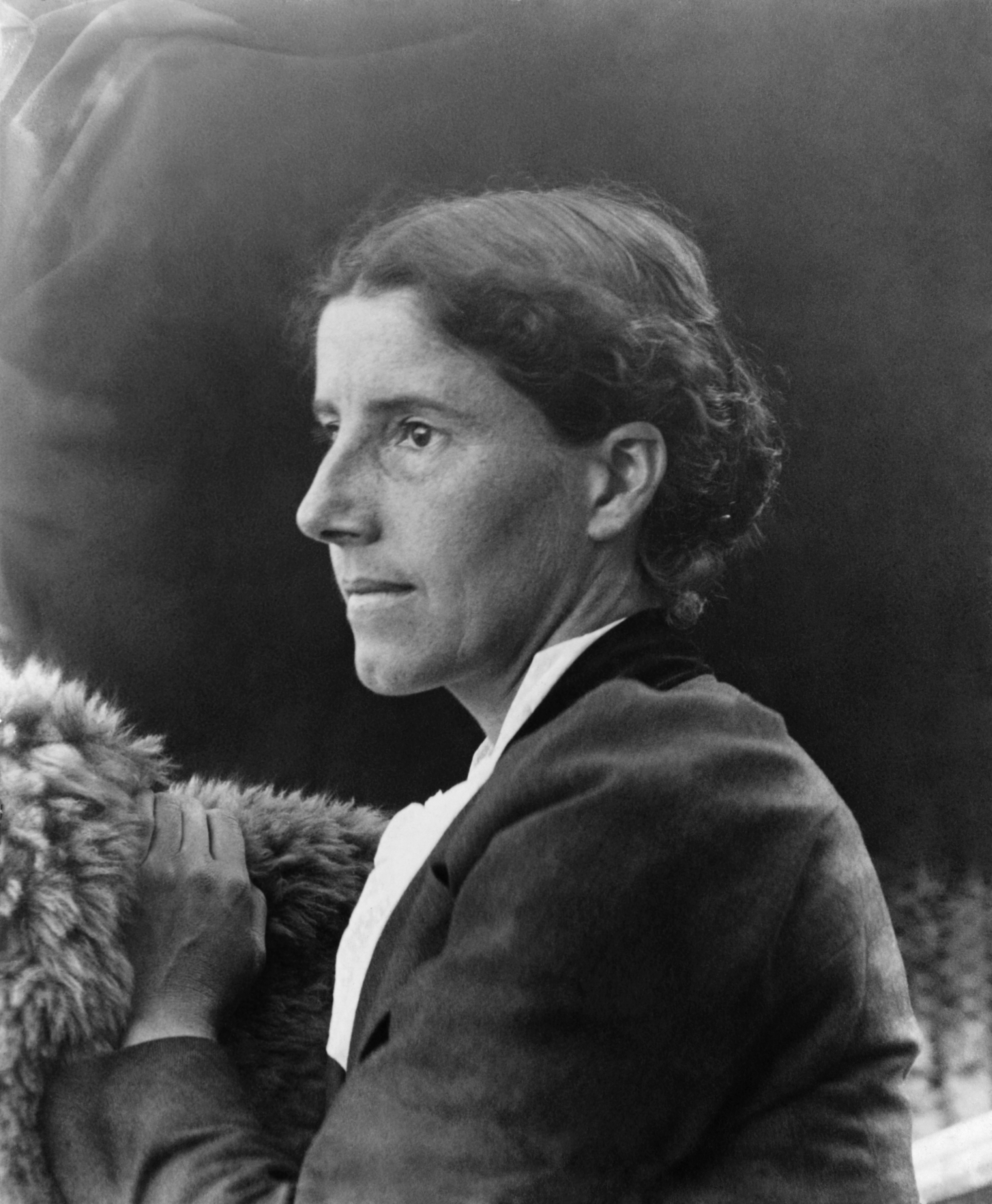 Charlotte Perkins Gilman, ca. 1900, by C. F. Lummis, Wikipedia
Charlotte Anna Perkins Gilman was born on July 3, 1860 in Hartford, Connecticut. Her father, Frederick Beecher Perkins, was nephew of Harriet Beecher Stowe and Catharine Beecher and grandson of evangelist Lyman Beecher, whose American roots could be traced back to 1637. Frederick Perkins divorced her mother, Mary Westcott, and Gilman and her one surviving brother were poor relations, moving frequently. Known as a writer and lecturer, Gilman, enormously proud of her Beecher blood, began her public career as a poet; her satirical verse withinIn This Our World (1893) enjoyed a near cult following among socialists in the United States and England. However, her treatise Women and Economics (1898) established Gilman's international reputation as a feminist social critic even though she repudiated the term when it came in use in 1891. Today we know her best as the author of "The Yellow Wall-Paper" (1892).
|
Catherine Golden | ||
| Mar 1862 |
Goblin Market and Other Poems PublishedGoblin Market is a Victorian narrative poem written by Christina Rossetti and illustrated by her brother Dante Gabriel. Rossetti felt that the collaboration with her brother was crucial to her overall work, that she deliberately delayed the publication until Dante Garbiel’s illustrations were ready for press. He designed a total of two illustrations, the frontispiece and title page, for The Goblin Market. Both images were pressed using wood engravings, evoking the pre-raphaelite designs popular during the 1860’s. The passages appeal to the senses through vivid descriptions of colours, textures, aromas and taste. Critics assigned the poem to various general categories over the following decades and throughout the twentieth century. It was first viewed as a fairytale but was later viewed as an allegorical piece. Feminist critics often analyzed the poem’s social commentary on gender relations and the relationship between two sisters. Later in the nineteenth century, readers, reviewers, illustrators, and composers began to focus on the poem’s powerful aesthetic qualities. Its sensuous patterns, religious images, and social implications inspired the focus of school studies and as well as musical settings and performances. The power of its visual images, and the two wood-engraved designs by Dante Gabriel Rossetti in the poem’s first publication, turned to evoke numerous artistic interpretations, ranging from stained glass windows to gift books.
Curated by Kisha Rendon, Joseph Pereira, and Payton Flood Public Domain; source: COVE Goblin Market edition by Lorraine Janzen Kooistra, Antony Harrison |
Payton Flood | ||
| Jan 1892 |
"The Yellow Wallpaper"
Articles |
Dave Rettenmaier | ||
| 1896 |
New Poems by Christina Rossetti publishedIn 1896, following Christina Rossetti's death in 1894, William Michael Rossetti edited and published New Poems by Christina Rossetti. The collection included "hitherto unpublished or uncollected" poetry by C. Rossetti, including, notably, the sonnet, "In an Artist's Studio," about her brother Dante Gabriel Rossetti's relationship with Elizabeth Siddal. |
Dino Franco Felluga | ||
| 4 Jun 1919 to 18 Aug 1920 |
1920: 19th Amendment to the U.S. Constitution: Women's Right to Vote Copy of 19th Amendment to the US Constitution, National Archives The 19th Amendment, which Congress passed on June 4, 1919 and ratified on August 18, 1920--guarantees that all women in America have the right to vote. This was a major milestone in liberty and equal rights. The Suggrage movement, which began in the later decades of the nineteenth century, led to lectures, marches, protests, agitation, and more. Sadly, few of the early supporters of the movement were alive in 1920 when their dream became reality. Not surprisingly, Gilman was a major proponent of women's rights, and her poetry, fiction, and nonfiction treatises helped to advance this cause.
|
Catherine Golden | ||
| circa. 1960 to circa. 1970 |
William Blake's Influence on Music/Culture in the 1960s and 1970sWilliam Blake's resistance to the status quo, manifested within his imaginative and evocative imagery, went unappreciated in his time, but the social and cultural movements of the 1960s and 1970s turned to William Blake. For example, in 1967, the rock band the Doors released the song called "End of the Night" where the singer Morrison sang lyrics directly pulled from Blake's "Auguries of Innocence." Morrison mirrored the religious imagery that Blake drew on. Besides the Doors, Blake's art and perspectives inspired Bob Dylan. Although not explicitly referencing Blake, other metal bands, such as Black Sabbath, reflect the sociopolitical turmoil of the 1960s and 1970s as activism groups advocated for civil, queer, and womens' rights in the wake of the Vietnam War. The themes of governmental oppression witnessed within Blake's work also reverberate in the music of the 1960s-1970s with both music and Blake demanding resistance to the systems in place.
The Doors, 1966, from Wikipedia.com |
Kimberly Pienkawa |

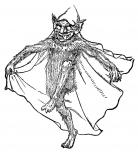


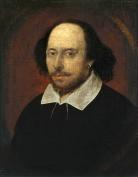
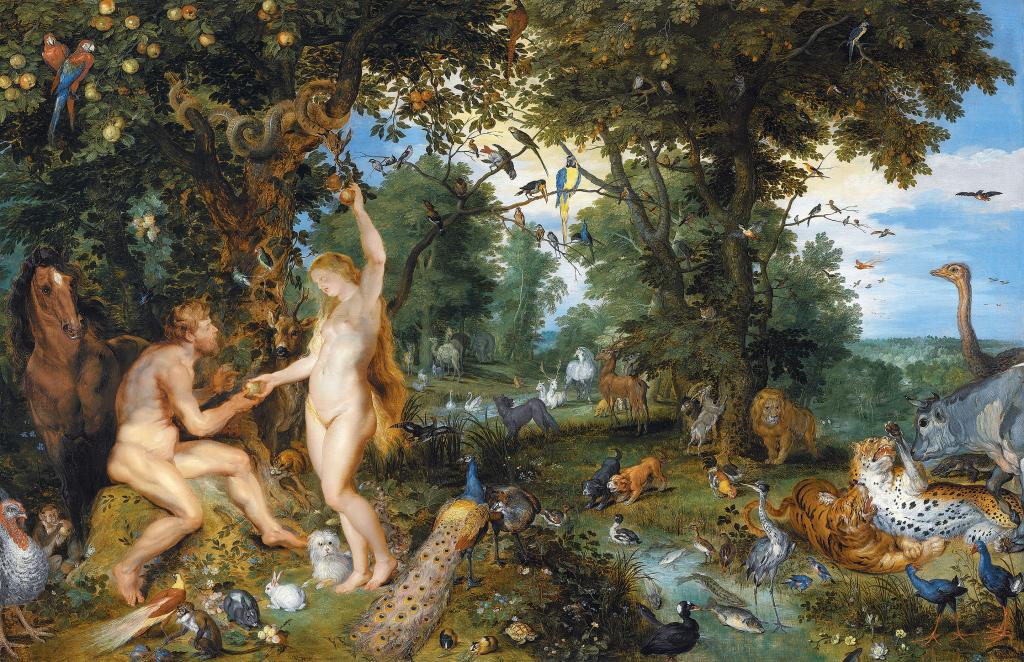 The Fall of Man (1615) by Jan Brueghel de Oude en Peter Paul Rubens
The Fall of Man (1615) by Jan Brueghel de Oude en Peter Paul Rubens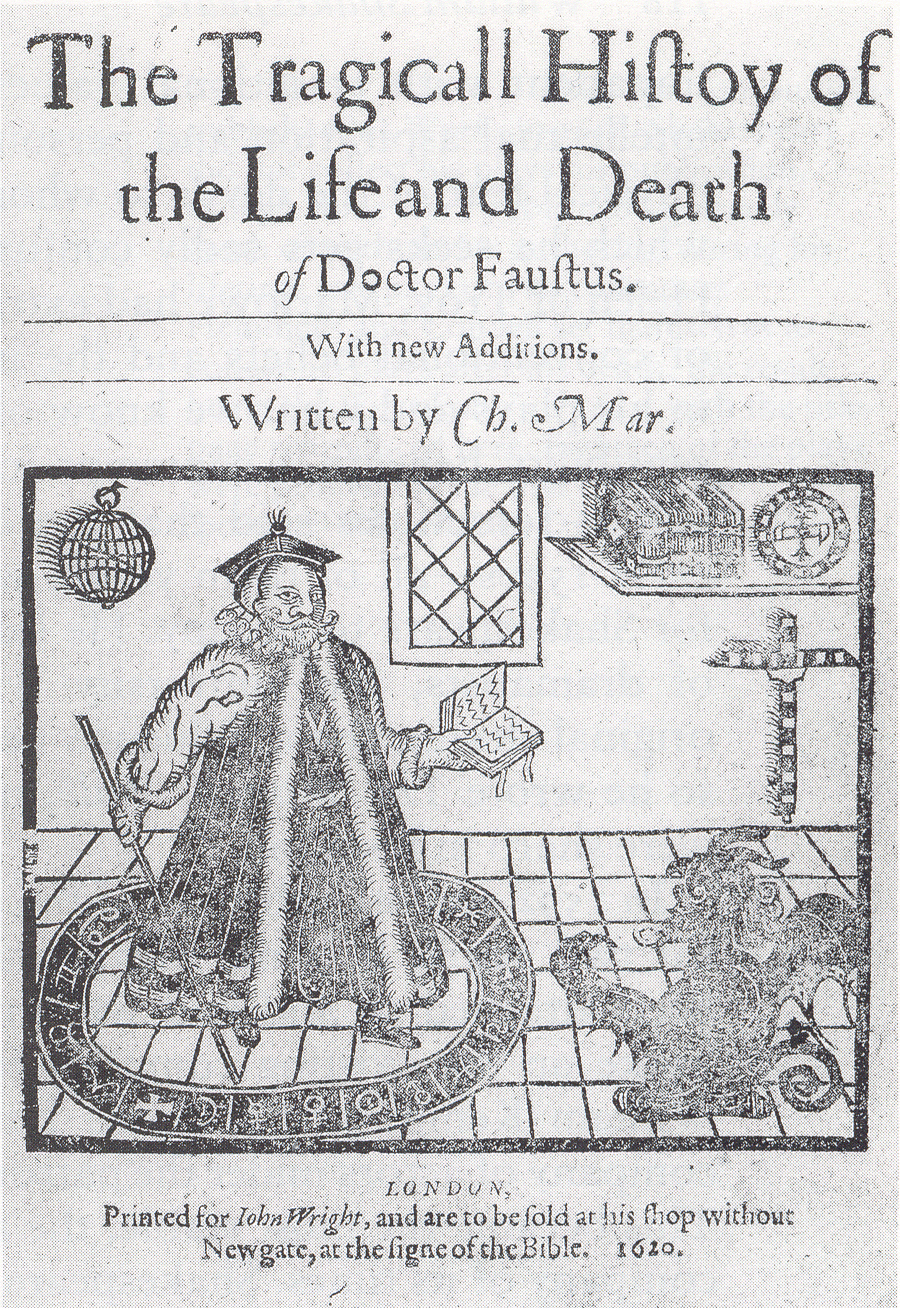
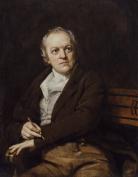

 is a key Romantic poet.
is a key Romantic poet.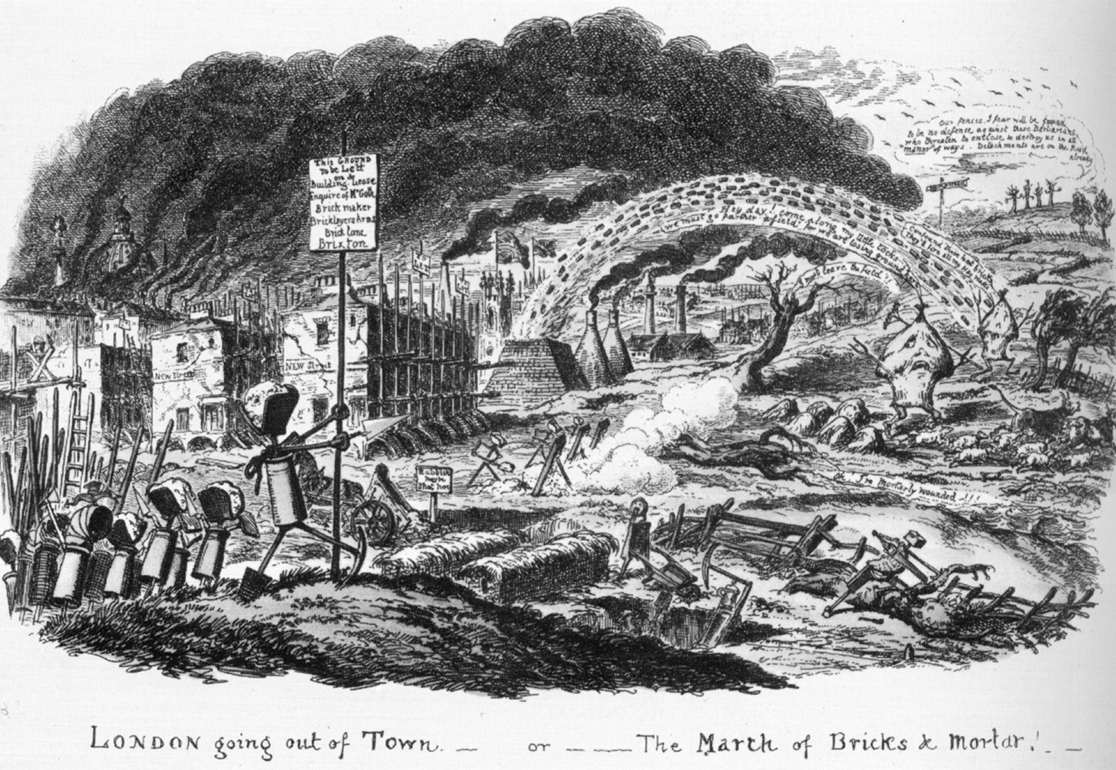

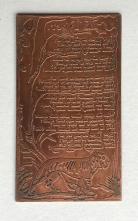
 The Edinburgh and London Royal Mail (1838) by John Frederick Herring
The Edinburgh and London Royal Mail (1838) by John Frederick Herring